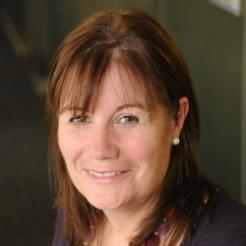Carolyn Sims, head of banking at Charity Bank, offers tips for community groups looking to borrow from an ethical bank.
So you’re passionate about finding solutions to housing, energy and other issues facing your local area. But when it comes to funding these sorts of projects, it can be challenging. Could you turn to an ethical bank for support?
How are ethical lenders different?
For ethical banks, a focus on financial return alone is a short-sighted and inadequate means of building a more sustainable world. The alternative is an approach to banking based on the triple bottom line, looking after people, planet and profit. This can involve lending savers money to charitable projects, so ethical banks are often experienced in lending to the social sector and familiar with its specificities.
What information do you need to provide to secure a loan from an ethical lender?
We can’t speak for all lenders, but this is the type of information we like to see at Charity Bank:
- Show how you plan to use the loan
- Demonstrate how you’re delivering social benefits
- Give evidence of good governance by explaining who runs the charity, how long the team has been there and that they have the right skills
- Explain how you fund your activities, including details of income streams or your plans to generate revenue
- Present a clear business plan showing how you aim to sustain and/or grow your organisation over the coming years
Would my community organisation meet the financial requirements of a loan?
Ethical lenders will work with you to establish whether a loan is right for you, taking all of the above factors into account. One vital factor to consider is how you would meet the financial requirements of a loan. You can get a rough idea yourself by considering your ‘debt service cover ratio’, which is a measure of the cash-flow you may have available with which to make loan repayments.
This involves looking at the surplus income you have available, from any trading activities, rents and other unrestricted funding, to repay your loan. Once you’ve taken into account overheads, expenses and any plans to generate future revenue, do you or will you have enough surplus available to create a realistic plan for paying back a loan, that allows you to clear the debt as quickly as possible, or in a series of regular and affordable payments?
What does borrowing to support a charitable mission look like in practice?
Ann Harding, co-founding director of Settle Hydro has experience of using loan finance to support community energy. So we asked her to describe her grassroots work and where loans fit in.
Settle hydro: how a loan helped us launch a community energy project: “We wanted to encourage investment in our market town and bolster the local economy, so we set up a registered society, with the aim of generating revenue by selling green hydro-electricity to the National Grid. We’ve generated surpluses enabling us to invest in local community projects, including the regeneration of a local theatre which, as a result, is no longer tied to grant funding.
"We used three loans from Charity Bank to achieve our vision and today I can proudly say that we are the first community-funded hydro-electric project in the region. The 50kW plant produces enough electricity to power 50 homes. Not only that, it has attracted many visitors to the town, bolstering business for local B&Bs, pubs and restaurants. We are now repaying our most recent loan from the income we receive from selling the electricity we generate.”
Ann Harding, co-founding director, Settle Hydro
Helpful hints: Settle Hydro was able to gain the confidence of both local investors and Charity Bank. The founders created a Share Prospectus, which is available to download from the hydro’s website. The prospectus, along with the information on the website, was the material used to give confidence to prospective investors. It was key to show how revenue would be generated.
What if my organisation isn’t ready for loan finance, but I’m still interested?
If you or an ethical lender decides that you are not in a position to take on a loan and you are interested in developing your organisation so that it can use repayable finance, you could consider the Big Potential Programme, which is aimed at helping organisations to become investment-ready.
Glossary:
Debt Service Cover Ratio: a measure of the cash-flow you may have available with which to make loan repayments.
Surplus Available for Debt Service: the surplus income from any trading activities, rents and other unrestricted funding, which you have available (after paying overheads and expenses) to repay your loan.
Further reading:
Social investment jargon buster
Investment readiness explained
Read more case studies.
Carolyn Sims is head of banking at Charity Bank, which has approved over £200m worth of loans to small and large charities and social enterprises over the last decade.
Call Charity Bank’s loans team on 01732 441919 or visit www.charitybank.org/charity-loans for more information, to discuss the suitability of loan finance for your organisation or to apply for a loan.
With thanks to Charity Bank for their support with this article.
This is an advertising feature.









